“Thogcha” – Thousand-Year-Old Tibetan Amulets And The Bon Culture
A. Sutherland - AncientPages.com - Enigmatic small amulets known as' thokchas' (thogchags) are made of iron, meteoric iron, or, as Tibetans say, "sky metal" or "sky-iron" denote tektites and meteorites, which are often high in iron content.
Tibetan thokcha, showing crouching lion in centre. Credit: Clemensmarabu - CC BY-SA 3.0
"Thogcha," heavenly iron or sky iron, has been used by Tibetans for thousands of years to create small talismans with a strong connection to the sky. Their tradition is much older than the Buddhistic tradition in Tibet and has its beginning in the pre-Buddhist period of Tibet.
Historically, thokchas were highly respected objects and used for sacred metallurgical fabrication of weapons, musical instruments, and sacred (religious) tools, like - the phurba, a three-sided peg, stake, knife, or nail-like ritual implement traditionally associated with Indo-Tibetan Buddhism, Bon (Bön), a Tibetan religion and Indian Vedic traditions.
The use of 'thogcha' in the metallurgical fabrication of sacred objects cast of Panchaloha is well-documented. The term has also denoted ancient metal objects as amulets made from thokcha. They are traditionally endowed with magic and protective power and are comparable to Tibetan Dzi beads.
Tibetan thokcha in the shape of a small arch. It may originally have been a tool used to open knots in leather straps that secured pack animal loads. Credit: Clemensmarabu - CC BY-SA 3.0
It was when the so-called Bon religion and culture with its heavenly origin dominated.
Even today, many rituals to attract luck and good fortune and chase away evil forces are conducted regularly because the power of tradition and human beliefs has always prevailed.
Bon's indigenous religion and culture were long-time dominant religious forces in the plateau. Though considerably transformed by Buddism, the Bon has survived and is still preserved among Tibetan communities living in exile.
Many ancient Tibetan scriptures supported by archeological evidence refer to the Bon culture and its roots spanning 18,000 years.
As John V. Bellezza, an explorer, a writer, and the foremost archaeology specialist in the cultural history of Tibet said that there is "... a close association with indigenous Tibetan religious beliefs and their practitioners and form a very important part of the country's pre-Buddhist and Buddhist heritage. For instance, the frequency of animal designs recalls the sacred status of animals in Tibetan culture..."
 Meteorite DZI bead "9 eyes" carved from Aletai iron meteorite. Image credit: IPlantagenet - CC BY-SA 4.0
Meteorite DZI bead "9 eyes" carved from Aletai iron meteorite. Image credit: IPlantagenet - CC BY-SA 4.0
Believed to be magically formed, powerful thogchags belong to the most treasured possessions of the Tibetans. As they say, if you own one, you are happy, but the Gods bless you if you own nine of them!
They are most often worn around the neck on a blessed cord. Sometimes they used to be attached to a mala used for spiritual practice, a prayer wheel, or objects frequently used by Tibetan magicians, healers, and shamans, in rituals performed by them.
Sacred "thogchags" represent a variety of shapes and forms, from simple depictions of animals, and tiers symbolizing the five elements (space, air, fire, water, and earth). These elements compose the universe
The most ancient depictions on the small miniatures are beyond the comprehension of modern-day Tibetans, who do not understand their true meaning. In this way, they remain the concealed mystery of the ancients.
Priceless "thogchags" are considered to have great medicinal value and almost supernatural quality. Due to their mystical healing properties, they are true treasures. Families in Tibet pass down these sky relics from one generation to another.
No one has ever questioned their value and importance.
Written by – A. Sutherland - AncientPages.com Senior Staff Writer
Updated on August 18, 2022
Copyright © AncientPages.com All rights reserved. This material may not be published, broadcast, rewritten or redistributed in whole or part without the express written permission of AncientPages.com
More From Ancient Pages
-
 5,000-Year-Old DNA Could Solve The Mystery Of Genetic Changes In Europe
Archaeology | Mar 8, 2022
5,000-Year-Old DNA Could Solve The Mystery Of Genetic Changes In Europe
Archaeology | Mar 8, 2022 -
 Climate, Conflict, Collapse: How Drought Destabilized The Last Major Precolonial Mayan City
Featured Stories | Jul 25, 2022
Climate, Conflict, Collapse: How Drought Destabilized The Last Major Precolonial Mayan City
Featured Stories | Jul 25, 2022 -
 Little Known History Of Amazon’s Ashaninka People Studied By Researchers
Archaeology | Mar 21, 2023
Little Known History Of Amazon’s Ashaninka People Studied By Researchers
Archaeology | Mar 21, 2023 -
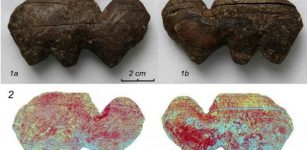 Ancient Mammoth Ivory Carving Technology Of Master Craftsmen – Reconstructed
Archaeology | Aug 27, 2020
Ancient Mammoth Ivory Carving Technology Of Master Craftsmen – Reconstructed
Archaeology | Aug 27, 2020 -
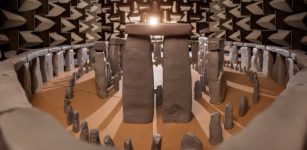 Ancient Sound Of Stones – Acoustics At Stonehenge Tested By Scientists
Ancient Technology | Aug 29, 2020
Ancient Sound Of Stones – Acoustics At Stonehenge Tested By Scientists
Ancient Technology | Aug 29, 2020 -
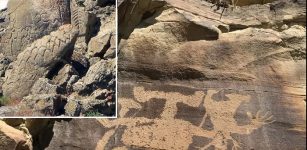 12,000-Year-Old Rock Art In North America – Dating Petroglyphs In The American West
Archaeology | Mar 4, 2022
12,000-Year-Old Rock Art In North America – Dating Petroglyphs In The American West
Archaeology | Mar 4, 2022 -
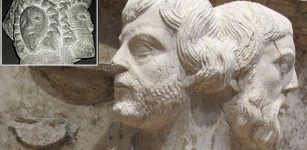 Two-Faced Great Roman God Janus – Symbol Of All Beginnings And Endings
Featured Stories | Apr 9, 2021
Two-Faced Great Roman God Janus – Symbol Of All Beginnings And Endings
Featured Stories | Apr 9, 2021 -
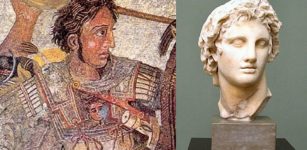 Why Didn’t Alexander The Great’s Body Show Signs Of Decomposition For Several Days? A Never-Before Suggested Explanation – From Scientists
Archaeology | Jan 24, 2019
Why Didn’t Alexander The Great’s Body Show Signs Of Decomposition For Several Days? A Never-Before Suggested Explanation – From Scientists
Archaeology | Jan 24, 2019 -
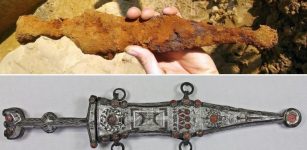 Stunning 2000-Year-Old Roman Silver Dagger Used By Legendary Germanic Warriors Discovered By Teenager
Archaeology | Feb 18, 2020
Stunning 2000-Year-Old Roman Silver Dagger Used By Legendary Germanic Warriors Discovered By Teenager
Archaeology | Feb 18, 2020 -
 Longvek – Ancient Historical City That Sheds Light On Cambodia’s ‘Dark Age’
Archaeology | Jan 13, 2016
Longvek – Ancient Historical City That Sheds Light On Cambodia’s ‘Dark Age’
Archaeology | Jan 13, 2016 -
 Mount’s Bay, Lyonesse, Langarroc: Legendary Submerged Lands And Buried Towns Of Cornwall
Featured Stories | Apr 21, 2022
Mount’s Bay, Lyonesse, Langarroc: Legendary Submerged Lands And Buried Towns Of Cornwall
Featured Stories | Apr 21, 2022 -
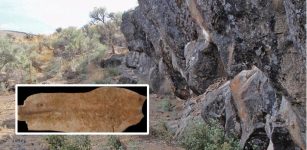 18,000-Year-Old Relics Discovered In Oregon – Oldest Home In North America?
Archaeology | Jul 12, 2023
18,000-Year-Old Relics Discovered In Oregon – Oldest Home In North America?
Archaeology | Jul 12, 2023 -
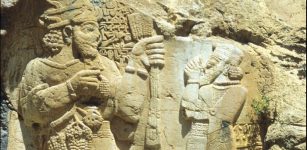 Ivriz Relief: 3,000-Year-Old Hittite Relief – Oldest Known Symbol Of Agricultural Fertility In History
Artifacts | Jun 13, 2019
Ivriz Relief: 3,000-Year-Old Hittite Relief – Oldest Known Symbol Of Agricultural Fertility In History
Artifacts | Jun 13, 2019 -
 2.37-Meter Sword And Unusual Shield Mirror Unearthed In Ancient Mound In Japan
Archaeology | Jan 27, 2023
2.37-Meter Sword And Unusual Shield Mirror Unearthed In Ancient Mound In Japan
Archaeology | Jan 27, 2023 -
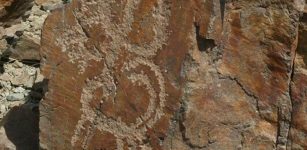 Petroglyphs Hold Secrets To 14,000 Years Of Human Life In Iran
Archaeology | Apr 30, 2020
Petroglyphs Hold Secrets To 14,000 Years Of Human Life In Iran
Archaeology | Apr 30, 2020 -
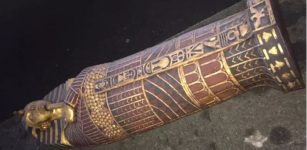 How Did An Ancient Egyptian Sarcophagus End Up Abandoned On A Street In London?
Artifacts | Mar 22, 2023
How Did An Ancient Egyptian Sarcophagus End Up Abandoned On A Street In London?
Artifacts | Mar 22, 2023 -
 Hermes – Divine Trickster, Psychopomp, Patron Of Merchants And Thieves In Greek Mythology
Featured Stories | Jan 15, 2019
Hermes – Divine Trickster, Psychopomp, Patron Of Merchants And Thieves In Greek Mythology
Featured Stories | Jan 15, 2019 -
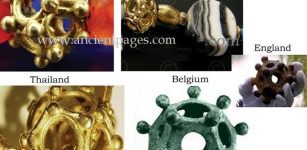 Dodecahedron: Sophisticated Ancient Device Found In Europe And Asia
Ancient Technology | May 14, 2014
Dodecahedron: Sophisticated Ancient Device Found In Europe And Asia
Ancient Technology | May 14, 2014 -
 Why Do Some Men Think Often About The Roman Empire?
News | Oct 4, 2023
Why Do Some Men Think Often About The Roman Empire?
News | Oct 4, 2023 -
 Ice Age Cycles Played A Key Role In Early Human Interbreeding
DNA | Oct 19, 2023
Ice Age Cycles Played A Key Role In Early Human Interbreeding
DNA | Oct 19, 2023


